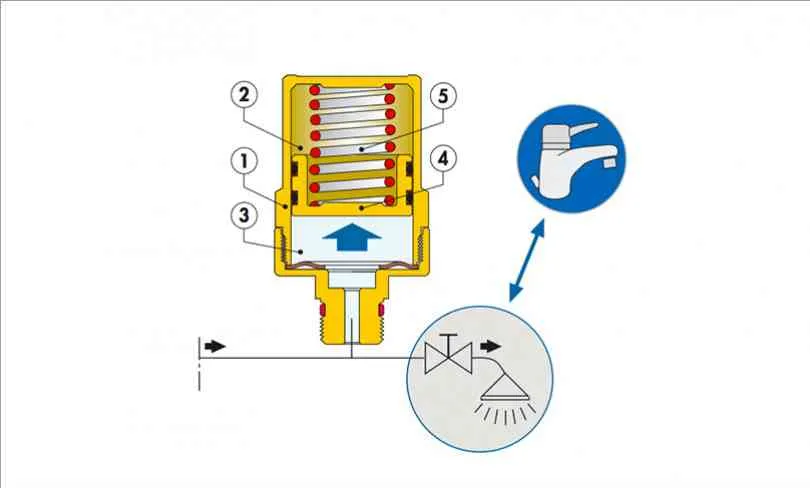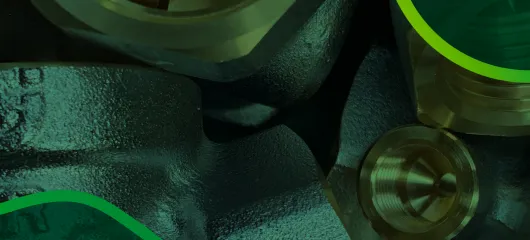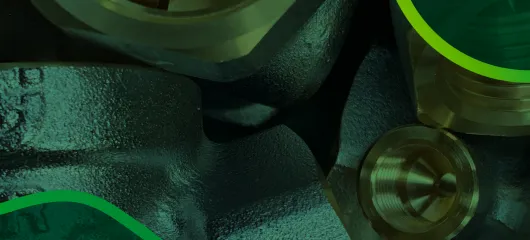Water hammer arrester
The water hammer arrester, when installed close to single-lever mixing taps, solenoid valves, ball valves, etc., prevents water hammering negative effects (noise and damage to the whole system).
The use of water hammer arrester is recommended in particular by UNI 9182 regulation “Cold and hot water supply and distribution systems.Design, testing and management criteria”.
The Caleffi 525 series water hammer arrester is composed of a cylinder (1) divided into two chambers (2) and (3) by a piston with two o-ring seals (4). The closed chamber (2) contains air and acts as a damper due to the compressibility of the air. The open chamber (3) is connected directly to the pipe and fills with the system water. The water thrust on the piston is counteracted both by the air pressure variation in the chamber (2) and by the contrastspring (5) housed behind the piston in the air chamber.
The oscilloscope graph reveals the following:
- speed of the pressure increase
- oscillatory character of the phenomenon
- continuance of high pressure in the pipe even after the water hammer
- effectiveness of the water hammer arrester
Reduced dimensions
Water hammer arresters are easy to install in the system, preferably in the vicinity of the shut-off devices which originate the overpressure to damp.
Maintenance free
Compared to pneumatic arresters, Caleffi 525 series arresters, since mechanical, are maintenance free.
Foodsafe elastomers and other materials
The elastomers used in the seals and the other materials comply with the compatibility requirements for usewith potable water as required by WRAS certifications.
Reference standards
Article 15 of UNI 9182 (IT) “Cold and hot water supply and distribution systems. Design, testing and management criteria”, specifies that: “All cold and hot water distribution systems must be equipped with water hammer arrester of the mechanical(spring)or hydropneumatic (permanent or serviceable air cushion) type...” The installation of the water hammer arrester must also comply with the “Guidelines for the prevention and control of Legionnaire’s Disease”, as set out by the Ministry of Health and adopted by the Regional State Conference on 4.4.2000. The arresters must be installed in such a way as not to create zones of stagnant water, which may be difficult to reach for the purposes of disinfection.
Installation recommendations
The Caleffi 525 series water hammer arresters are designed for single service installation (under washhand basins) or small groups of services, such as in a bathroom supplied by a domestic manifold. For larger scale water hammer problems, the solutions are different and must be designed to fit the particular case. One possible solution to water hammer may be to install an expansion vessel to act as an arrester.
The traditional approach of installing water hammer arresters at the top of rising column, requires a review in the light of legislation about Legionnaire’s Disease. Although this solution was effective in attenuating water hammer, it is counterproductive in terms of system disinfection (both thermal and chemical) since it creates two types of hard to reach dead zones:
- sections of pipe connecting the hot water rising pipes with the water hammer arresters above the recirculation connections;
- zones of stagnant water inside the water hammer arresters themselves.














